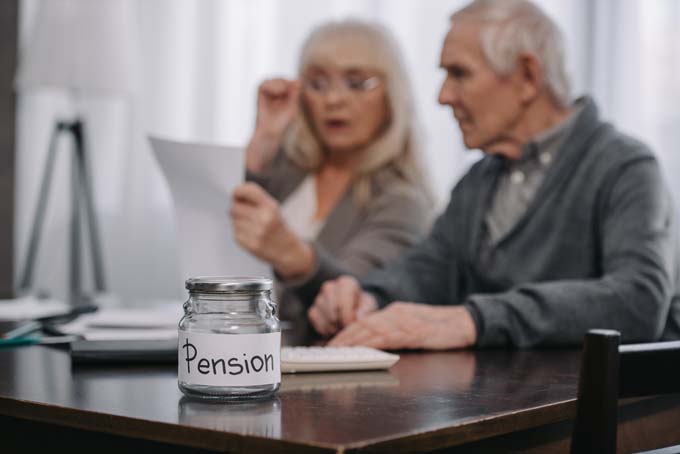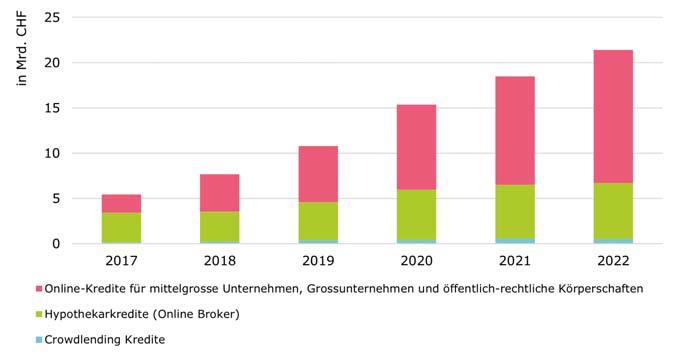Pension fund study 2022: Higher pensions are realistic
The Swisscanto Pension Fund Study 2022 shows a higher fitness of the pension funds, thanks to an investment return of 8.4 percent. Nevertheless, there are still large differences in performance and interest rates. However, higher pensions are coming into sight; only the current market situation is burdening the pension funds.

For Swiss pension funds, 2021 was a successful year. This is shown by the 22nd edition of the Swisscanto Pension Fund Study, published by Zürcher Kantonalbank. The pension funds generated an average net return of 8.4%. According to Swisscanto, this is the second-best result of the last decade and is significantly above the ten-year average of 5.4%. The high returns generated over the past few years are being used by the funds in a targeted manner to increase their financial fitness. This starting position now gives them more room for maneuver - especially when it comes to interest on retirement assets. Active insured benefited from a higher interest rate - across all funds, this averaged 4.25% in 2021, the highest since 2001, as the Pension Fund Study 2022 shows.
Redistribution from active insured to pensioners stopped
The pension funds have used the profitable years to prepare for the future. They have adjusted the technical interest rate, built up the fluctuation reserves, switched to generation tables, lowered the conversion rate and increased the retirement age. All this has resulted in a halt to the systemic redistribution of benefits from active insured to pensioners.
However, a two-tier society has emerged among pension funds: Funds that have already accumulated fluctuation reserves in excess of 75% have been able to pay twice as much interest on their insured's retirement assets as funds with lower reserves. For the model students among the pension funds, the way is clear for a trend reversal: In the future, they will be able to pay higher interest on the retirement assets of their active insured. Insured persons of funds that are behind schedule with the implementation of their homework will lose out. If the reserves are insufficiently accumulated, their pension fund assets will only earn below-average interest. For insured persons, it plays a decisive role with which fund they are insured via their employer.
Top cash registers make over ten times as much return as others
A sustainably high investment return will remain indispensable in the future to ensure a good return on retirement assets. In terms of performance, the range between the lowest and highest returns is very wide - a trend that has been apparent in the study for years. In 2021, the lowest value was 1.34%; the best fund achieved a return of 15.97%, which is over ten times higher. This is also reflected in the medium term over five years: The tenth of the funds with the lowest performance generated a return of 3.88% per year; the most successful tenth achieved a return of 7.21% per year. The reasons for these differences are structural, such as fund size, industry characteristics and asset allocation.
Bonds offer no security in current market turbulence
In terms of investment mix, pension funds relied on a record high equity allocation of 33.7% on average in 2021. Asset allocation is crucial, and its relevance has become even more important since the beginning of 2022 with the war in Ukraine, the global supply chain problems and the rise in interest rates: Bonds, as a supposedly safe form of investment, have not been able to play out their defensive qualities at the beginning of the year. This caused losses for all Swiss pension funds (on average -7.9% for bonds in CHF and -7.2% in foreign currencies). As a result, defensive pension funds with a high bond allocation suffered almost the same losses as equity-heavy funds from January to April: the decile with the lowest performance over the past five years suffered losses of 5.2%, while the decile with the highest performance lost about the same amount last year, at 5.1%. There is no way around equities in the investment mix.
"The past year has impressively shown how much insured persons benefit when their pension fund does its homework and the investment performance is right. Those who have good reserves should now pass on these surpluses to the insured," says Iwan Deplazes, Head of Asset Management at Zürcher Kantonalbank. "Investments remain the lifeblood for pension funds. The right investment strategy is more important than ever given the current market situation."
Health insurance funds fulfill their performance promises
Coverage ratios have never been as high as at the end of 2021: these averaged over 122.1% for private-law funds - 6 percentage points more than in the previous year. The positive development on the stock market was particularly responsible for this. While the coverage ratios had long oscillated around 110%, the curve has risen steeply since 2018, increasing by more than 13 percentage points. With the value of 122.1% at the end of 2021, the funds have exceeded the self-imposed target values for the fluctuation reserves of 18.5% for the first time. This is despite the fact that the boards of trustees have increased the targets for the average value for private-law pension funds from 15.9% to 18.5% since 2012. As a result, the funds have unrestricted funds for benefit improvements. However, the current market situation has resulted in the funding ratios falling slightly below the target again to 117.3% by the end of March 2022.
Interest Rate Turnaround Stops Decline in Technical Interest Rate
The solid reserves enable a trend reversal in the technical interest rate. This is based on the recommended upper limit of the Swiss Chamber of Pension Fund Experts and shows the long-term financial obligations with which the institutions are calculating. In 2021, the experts recommended on the basis of their calculations that the rate be increased in view of rising interest rates; in 2022, another such recommendation could follow. This means that the current average technical interest rates are now below the recommended upper limit - the pension funds are therefore making realistic estimates of their pension promises. The conversion rate, on the other hand, will continue to fall, according to the pension fund study figures: for men with retirement age 65, from an average of 5.43% in 2022 to 5.25% in 2026. "The funds are fit and can fulfill their benefit promises. We are seeing a turnaround: The redistribution from active insured to pensioners could finally be stopped. Higher pensions are coming into sight," says Heini Dändliker, Head of Key Account Management Corporate Clients Switzerland at Zürcher Kantonalbank.
Many health insurance funds anticipate BVG reform
The National Council and the Council of States Commission would like to lower the entry threshold in their proposals for the reform projects currently under discussion, whereas the Federal Council has not touched this issue in the BVG reform. Part-time workers and multi-jobbers are currently disadvantaged if they earn less than CHF 21,510 per year. In a quarter of the funds surveyed, this threshold has already been lowered or made variable. There are also discussions about reducing the coordination deduction, which disadvantages part-time workers in particular. However, flexible coordination deduction models are already offered by 86% the pension funds. The deduction is linked either to the degree of employment or to the insured salary. Some pension funds do not make any deductions at all. Only a minority of 14% still rely on fixed coordination deductions without weighting of the degree of employment. In some cases, the pension funds are one step ahead of the politicians on these issues.
Little progress on CO2-measures
By contrast, the picture is different for another relevant topic: the integration of sustainability criteria. In 2021, 33% of the funds had already incorporated environmental, social and corporate governance (ESG) criteria into their investment regulations, compared with just 25% in 2020. However, it is primarily the large funds that attach the necessary relevance to this topic. Smaller insurers are six years behind. There is hardly any movement in the measurement of CO2-intensities of the portfolios or in setting actual reduction targets: Only 6% have a concrete reduction target, while as many as 10% are giving this some initial thought.
Women strongly underrepresented on foundation boards
For the first time, pension funds were asked about the composition and work of their boards of trustees as part of the study. On average, the board of trustees consists of eight people, who usually belong to the company. With regard to investment decisions, around 80% of all pension funds rely on an investment committee, with almost all of the larger funds doing so. Although women represent 43% of the insured, only 22% of them are represented in the top management body of the funds.
Source: ZKB. More information to the study you can find here. The ORGANIZER has in a current articles (subject to a fee) also took a close look at a number of pension plans.









